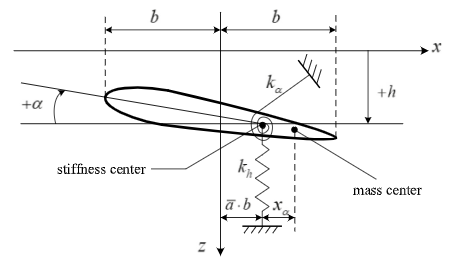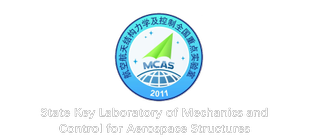An improved nonlinear reduced-order modeling for transonic aeroelastic systems
Zhijun Yang, Rui Huang, Haojie Liu, Yonghui Zhao, Haiyan Hu
Abstract: In this study, an improved nonlinear reduced-order model composed of a linear part and a nonlinear part is explored for transonic aeroelastic systems. The linear part is identified via the eigensystem realization algorithm and the nonlinear part is obtained via the Levenberg–Marquardt algorithm. The impulsive signal is chosen as the training signal for the linear part and the sinusoidal signal is used to determine the order of the linear part. The training signal for the nonlinear part is selected as the filtered white Gaussian noise with the maximal amplitude and frequency range to be designed via the aeroelastic responses. An NACA64A010 airfoil and an NACA0012 airfoil are taken as illustrative examples to demonstrate the performance of the presented reduced-order model in modeling transonic aerodynamic forces. The aeroelastic behaviors of the two airfoils are obtained via computational fluid dynamics to solve the Euler equation and the Navier–Stokes equation, respectively. The numerical results demonstrate that the presented reduced-order model can successfully predict the nonlinear aerodynamic forces with and without viscous flows. Moreover, the presented reduced-order model is capable of capturing the flutter velocity and modeling complex aeroelastic behaviors, including limit-cycle oscillations, beat phenomena and nodal-shaped oscillations at the transonic Mach numbers with high accuracy.

Airfoil model of two degrees of freedom
原文链接:https://www.sciencedirect.com/science/article/abs/pii/S0889974619304141





